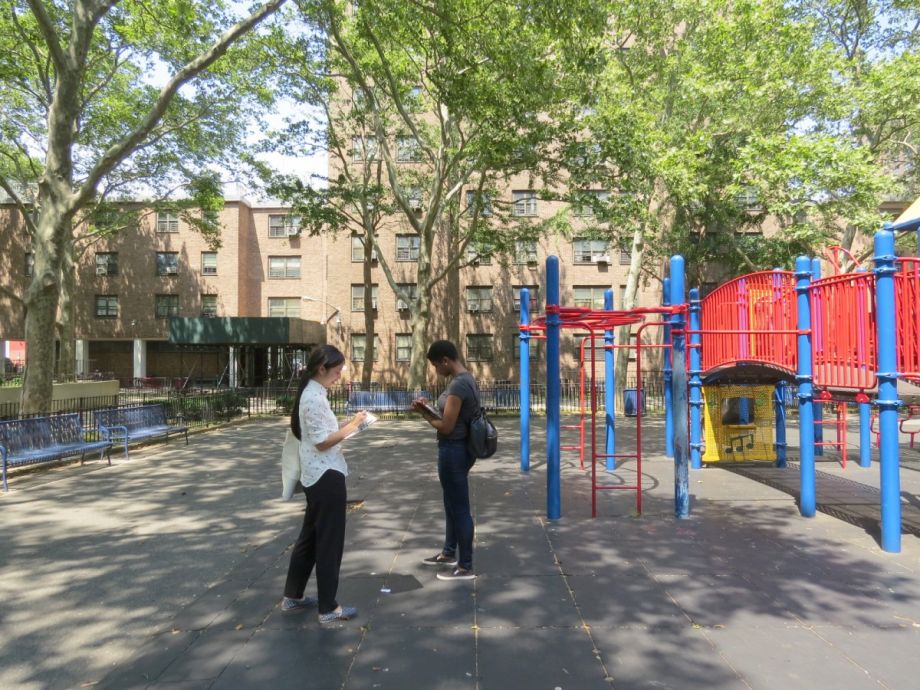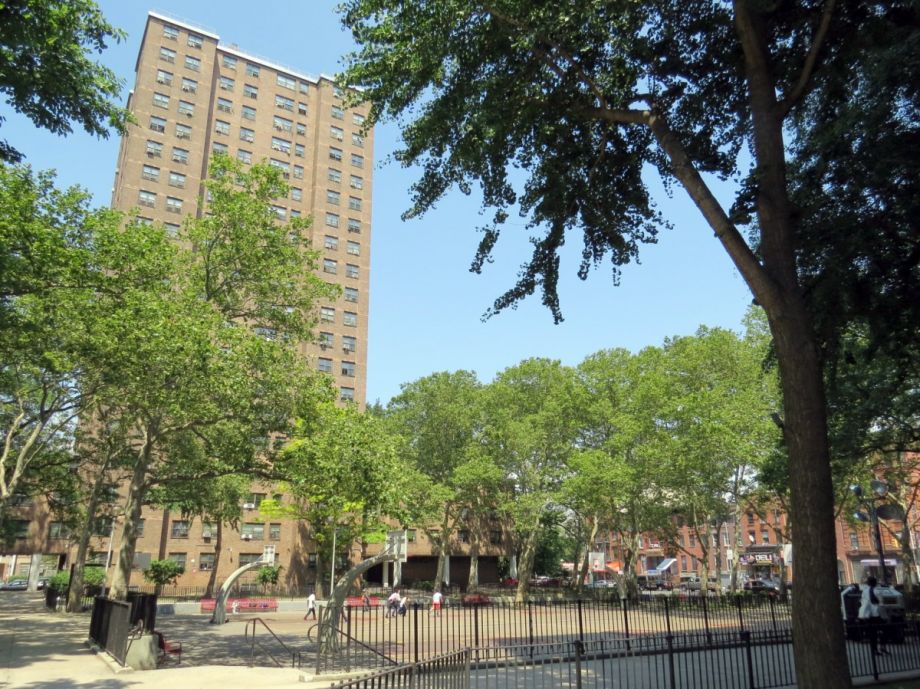Studying architecture for three years and practicing for four did not make me particularly interested in mold prevention or roof flashing for 80-year-old brick buildings. However, these aspects of building science are now priorities in my work as an Enterprise Rose Architectural Fellow within the largest owner-operator of public housing in the nation, the New York City Housing Authority (NYCHA, pronounced “nye-cha”). My work plan, crafted by NYCHA and Enterprise staff before they solicited fellowship applications, focuses on improving design and design processes throughout the agency by working with fellow staff, resident organizations and the broader design community. Doing this, the thinking goes, will improve the long-term prospects of the organization, its buildings and the homes of over 400,000 New Yorkers.
Since 2000, 62 Rose Fellows have served in 79 nonprofit community development organizations, but this is the first year any have been placed within public agencies; this includes my position with NYCHA and one with the Denver Housing Authority, to be followed next year by a placement with the New Orleans Redevelopment Authority. These positions represent a new partnership between different institutional generations of public interest design: on one hand, New Deal-era institutions like NYCHA established to provide decent homes and neighborhoods for modernizing cities, and on the other, more recent efforts like the Rose Fellowship originating in the 1990s and early 2000s from a renewed dedication to socially impactful design. As such, it is a moment of reckoning for today’s public interest designers: What do our notions of progressive design (Tactical Urbanism, Complete Streets, parklets, Better Blocks, Just Cities, Before I Die walls and more) have to offer the often criticized, always threatened, still living achievements of our forebears who built permanently affordable housing for millions of people? At the same time, this new trajectory for the fellowship provides opportunities and lessons from institutions that began as design experiments but have now operated for nearly a century.
The fellowship has been a new trajectory for me as well. After graduate school, I taught architecture to undergraduates at the New Jersey Institute of Technology and worked as an independent urban design consultant. In contrast to the sealed studios of my education, working with government and neighborhood-based organizations expanded my sense of design possibilities. Through projects like the Newark Zoning Workshop, a popular education tool I designed with the city planning office, I was able to collaborate with neighborhood organizations, communities of faith and block clubs, developing complex and nourishing relationships. However, while this work engaged larger systems I was curious about, I still operated from outside of them. This changed during my time at well-established firm Skidmore, Owings & Merrill, which exposed me to the politics, finance and lifecycle of large-scale projects around the globe. While it thrilled to operate at this scale and glimpse the power of organized architecture, needless to say that my friends at the block club were not among our clientele.
Now, when I am asked why I traded the freedom and perks of independent and private-sector practice for a job within the largest (and therefore probably most bureaucratic) public housing authority in the country, I try to describe the advantages of designing within a public agency. Applying for the fellowship, I wanted to learn to use design and regulatory tools together. Now that I’ve been at NYCHA for six months, I’ve returned to this question by speaking with a number of practitioners at New York City agencies. Here’s what they taught me:
Designers in Public Agencies Form Stronger & Richer Alliances
While public agencies can be associated with cubicle culture, the mandate to be responsive to community needs means that designers can more easily develop alliances and partnerships to move agendas forward. Like Rick Bell, executive director of design and construction excellence for the city of New York’s Department of Design and Construction, believes “the overarching value placed on participation” means that designers in public agencies can spend time “being out in the field, listening, representing and helping formulate strategies to shape meaningful places that are equitable, sustainable, resilient and good for our physical and mental health.”

Wing Tang and Carme Azor, NYCHA summer interns from the Landscape Architecture Program at City University of New York, survey playground maintenance and improvement needs at Edenwald Houses in the Bronx.
Amy Sananman moved from leading a well-established community arts nonprofit she founded to her current role as the executive director of the Mayor’s Action Plan for Neighborhood Safety, housed within the Office of Criminal Justice, because she could “ask for collaboration with the police department or Department of Design and Construction and involve them in the way I could not” as the executive director of a nonprofit. She adds that her history in the nonprofit sector allows her to “make the alliances between the government and other sectors, making it comfortable for people to work with government.”
Designers in Public Agencies Get Trained TO SOLVE Complex Problems
Public agencies, like many other large institutions, are layered with bureaucratic inefficiencies and outdated management practices, and perpetually suffer funding cuts. But these are the conditions in which change gets made. Charles McKinney, principal urban designer at New York City Parks & Recreation, says that “it is important to realize that government is imperfect, and under-resourced. To be effective you have to do more than you are asked to do, with less resources than are reasonable. You have to be resourceful and unstoppable. My motto is I will do whatever is required.”
Bruce Eisenberg, deputy director of the Architectural Unit of Capital Projects at NYCHA says that “when you work within a public agency, you [have to] understand what makes it tick. With that knowledge, only after getting into the underbelly of the organization, will you be able to help set policy and chart a direction for its successful future. Great work can come from figuring out how to make every move, every decision count, not just adding up the sum of the parts, but compiling them in a way to get bonus points.”
Designers in Public Agencies Find Fulfilling & Meaningful Work
Finally, the designers who I spoke with mentioned the fulfillment that comes from improving the environment through the very agencies that we as a society have set up to do just that. Frank Ruchala, Jr., deputy director of the zoning division of the New York City Department of City Planning, told me that he intended to work in the public sector for only a few years “just to see the other side of things. It’s been nine years now and it’s never gotten boring. Working for the public sector has been the most fulfilling experience of my career.”
Before now, most career paths I considered were academic or with small, values-forward design practices. Today, I’ve begun to see many other ways to go forward, bringing together the goals and relationships born of advocacy, the practices and ethos of community design, and the organizational ambition and scale of public housing and other social infrastructures by engaging in the details of architecture. For example, figuring out how to ensure facade systems get properly rehabilitated to prevent mold is one way policy becomes material, how abstractions like a “decent home for every American” become true or fall short. Less mold means healthier homes for the 110,000 children who live in NYCHA buildings. Masonry wall sections have never looked sexier!
Jae Shin is an Enterprise Rose Architectural Fellow. This premier fellowship in public interest design places designers in community development organizations for three-year positions. To learn more about the Enterprise Rose Architectural Fellowship and apply for the upcoming cohort by July 10, visit here.
















